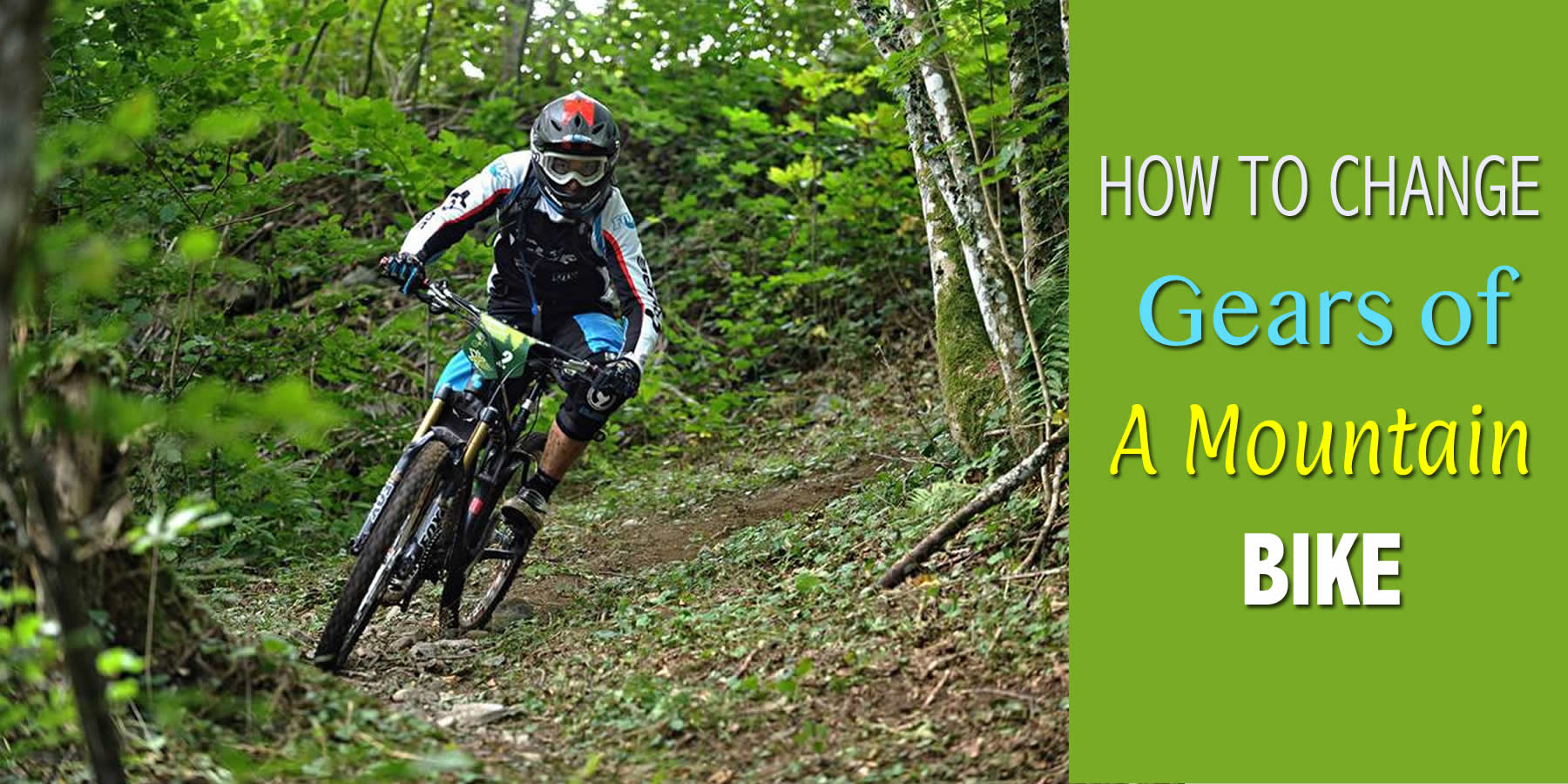Mastering when and how to change gears on a mountain bike is not that easy to most people. Most riders who are new to a geared bike may find it frustrating especially when they change gear which is much harder or that which is much easier than the one they preferred. To me, shifting of gears is the easiest.
It is all about practice and with time, perfection will just come. Only twenty percent understanding of what is happening is required to change your gears effectively; the rest is down to practice. With practice, you only need a short period to become a pro, shifting your gears smoothly without even thinking about it.
Why Bikes have Gears: Bikes have gears to make pedaling easier whether you are cycling downhill, uphill or on a flat terrain. Climbing a hill using a bike that has no gears is not that comfortable. Likewise, descending a hill or a mountain with a bike that has no gears can be challenging in that your feet may not be able to keep up with the speed of your wheels.

How To Shift Gears On A Mountain Bike - Tips
Below are the few tips for changing gears of your mountain bike.
The Basics:
Peddling is all about developing a rhythm. The gears are there to make that happen. Shifting gears enables you to maintain a constant pace when cycling. Therefore to make peddling easier, the simple physics is that you use a lower gear when going up a hill then shift to a higher gear when cycling down.
Bike Basics:
It is necessary that you have a little knowledge of the basic mechanics of your mountain bike reviews. You can always refer to your manual to know more about your bike. Majority of mountain bikes that have gears have around five to ten gears in the back.
Every gear found at the back is referred to as a sprocket. The word cassette is used when we refer to a set of sprockets. The chain is moved from one sprocket to the next by the rear derailleur. A mountain bike also requires maintenance.

Lubricating your chains and shifter cables is paramount. You may also need to oil the chain and derailleur linkages regularly. You should also ensure that you inspect your cables regularly for any damage and fraying. Your derailleur and sockets must also be kept clean always.
Shifting Your Bike's Rear Gears:
Most of your shifting will take place at the rear. The shifter for the back gears in most cases is located at the right-hand side while that for the front chainrings is found on the left side of the handlebars. Make a habit of familiarizing yourself with the shifter for the back gears first. The one for the front chainrings is for major shifting that is not required frequently.











Among the back gears, the largest sprocket enables you to have easiest pedaling and the slowest speed. This sprocket is found closest to the inside of the wheel. The outermost sprocket is the smallest one.
The sprocket enables you to cycle at the fastest speed but with a lot of effort. Just like in a stick-shift car, to downshift is to move to the larger sprocket which is an easier gear and to upshift is to move to the smaller sprocket which is a harder gear.
The aim of shifting gears is to change gears when you realize that your peddling is becoming much easier or difficult. You will, therefore, be able to keep your pedaling rhythm.
When you are peddling, and you realize it begins to get a little bit harder due to a slight rise in the path, you downshift to maintain your rhythm. When you realize the road is beginning to flatten and there is a rise in speed, upshift into a higher gear to allow you go faster with the same amount of pressure.
What The Front Gears Do:
Majority of mountain bikes have around two to three front gears. The gears are controlled by the front derailleur and are referred to as chainrings. Shifting the front gears is not as often as in the rear gears. When you are going slower in most cases for example when climbing a hill, you are supposed to stay in the smaller chain.
When your speed is higher especially when you are descending or peddling in a flat terrain, you are supposed to shift to the larger chain. In, a situation where you are climbing and descending hills, you will have to shift chainrings at the top and bottom of each hill.
When you are in the smaller chainring, and you realize that there is a need for more pedaling power than the one provided by the rear gears.
You can get a new range of higher rearing by changing to the larger chainring. In this situation, it is advisable that you adjust the rear gears immediately before or after shifting the front gears to avoid jumping more gears at once. Read details about: How To Jump A Mountain Bike.
Shifting Tips:
Final Word:
Practice makes perfect. With regular practice, you will be able to master these tips much quicker than you can imagine. Gears make pedaling much easier and enjoyable.
Relevant Resources:

Hello Guys! I am John Reese, a professional biker and my hobby is biking! I have been biking for last 10 years and I love using bikes while outing as well. Based on my experiences with the different type of bikes (mountain bikes, road bikes and hybrid bikes); I am sharing my opinion about various bikes so that a beginner can get started right away. Happy reading!

